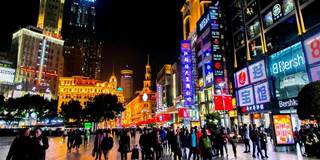China has already shown itself to be handling US trade pressure in a much more savvy way than Japan did in the 1980s. Far from laying the groundwork for a protracted recession, China’s response – increasing imports and accelerating domestic structural reforms – will support high-quality long-term growth.
SHANGHAI – US President Donald Trump’s announced plans to target China with trade tariffs represent a significant departure from his predecessors’ approach. China is now seen primarily as an economic adversary, rather than an economic partner. That may be a difference of degree rather than kind: Trump’s policies are the culmination of a decade of US trade frustration.
The sources of US frustration are well known. Since joining the World Trade Organization in 2001, China has been accused of failing to meet its market-access obligations, and even of having regressed in some areas. Moreover, China is believed to have long used state intervention, including industrial policy, to limit US businesses and investment in the domestic market, while enabling Chinese enterprises to achieve rapid technological progress.
More fundamentally, however, the US is concerned that China’s rapid economic development now poses a real challenge to America’s global influence. This has fueled a sense that China must be “contained.” In Trump’s view, part of the solution is trade protectionism.

SHANGHAI – US President Donald Trump’s announced plans to target China with trade tariffs represent a significant departure from his predecessors’ approach. China is now seen primarily as an economic adversary, rather than an economic partner. That may be a difference of degree rather than kind: Trump’s policies are the culmination of a decade of US trade frustration.
The sources of US frustration are well known. Since joining the World Trade Organization in 2001, China has been accused of failing to meet its market-access obligations, and even of having regressed in some areas. Moreover, China is believed to have long used state intervention, including industrial policy, to limit US businesses and investment in the domestic market, while enabling Chinese enterprises to achieve rapid technological progress.
More fundamentally, however, the US is concerned that China’s rapid economic development now poses a real challenge to America’s global influence. This has fueled a sense that China must be “contained.” In Trump’s view, part of the solution is trade protectionism.